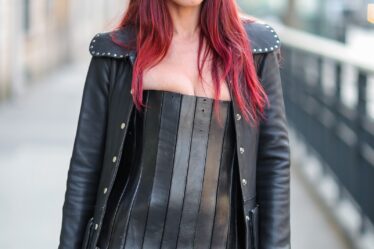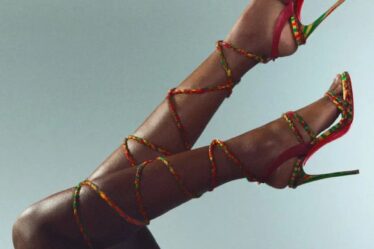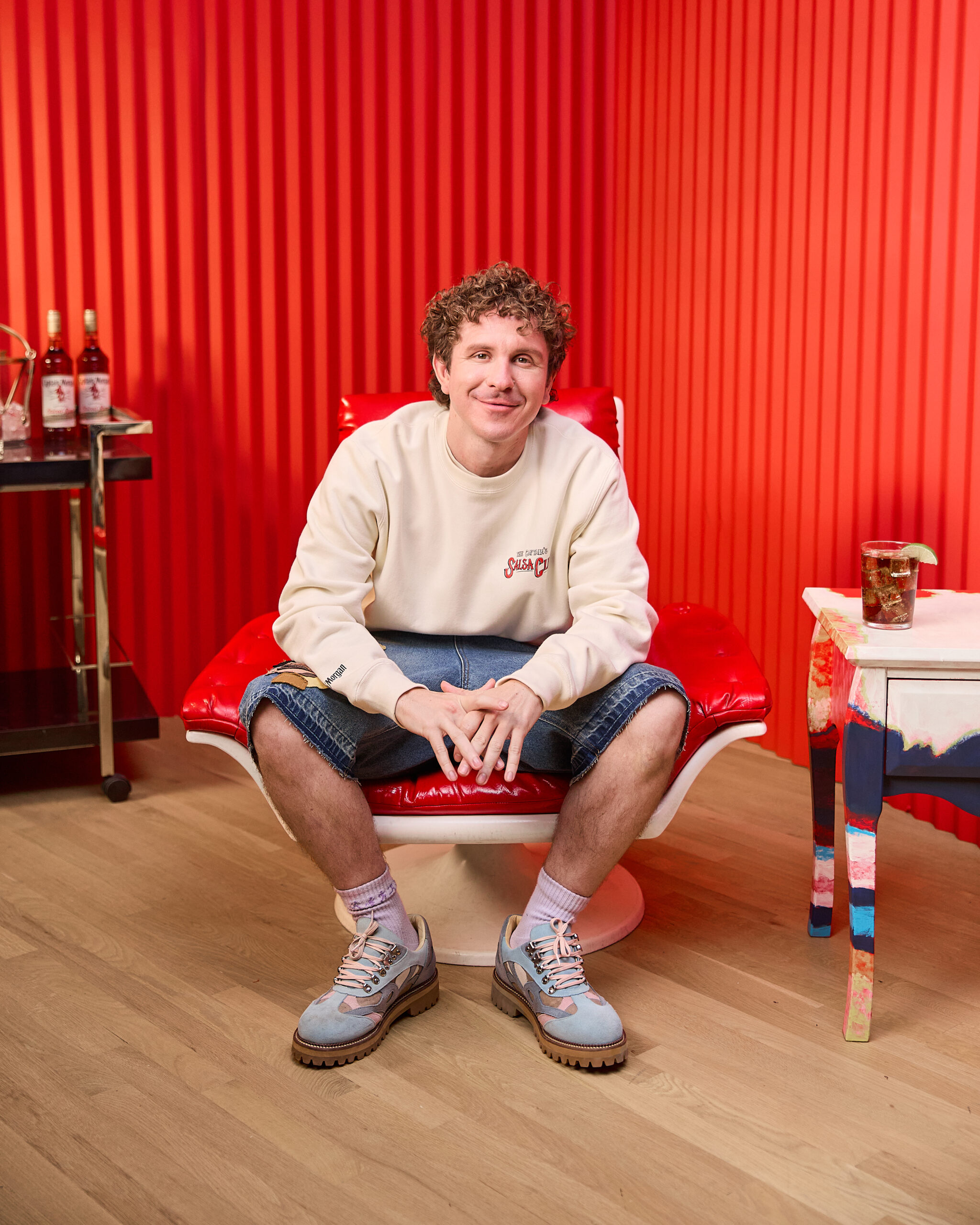
What do you get when you add a scavenger hunt to the KidSuper universe? Victor Cruz salsa dancing, apparently.
Courtesy of Captain Morgan

You may know KidSuper from its extravagant Paris Fashion Week fashion shows – can you really call them fashion shows? Fashion acts, maybe? Or performances? Anyway, you may know the man behind KidSuper, Colm Dillane, as the Louis Vuitton guest designer for its Autumn/Winter 2023 collection. But behind the seasonal international travel and the endless creative outpour, is someone who describes himself as quite “mischievous” — and who, as he tells me, throws salsa dancing parties.
Funnily enough, that was the initial inspiration point for the KidSuper x Captain Morgan collaboration, featuring the Super Bowl champion Victor Cruz, who captivated America with his endzone salsa victory dancing. Playful and cheeky, the collaboration comes together in the form of a crewneck, which captures the adventurous spirit embodied by all of those involved.
Speaking of adventure, Captain Morgan has put together a treasure map for you, in case you miss out on the drop happening this Friday on KidSuper’s website. Back for its second edition, the rum company’s Follow The Captain scavenger hunt will give you another chance at securing the merch, making you officially part of the Captain’s crew.
In the meantime, we chatted with Dillane on the collaboration, his creative ways behind KidSuper, and what’s next in line post-guest designing the Louis Vuitton collection.
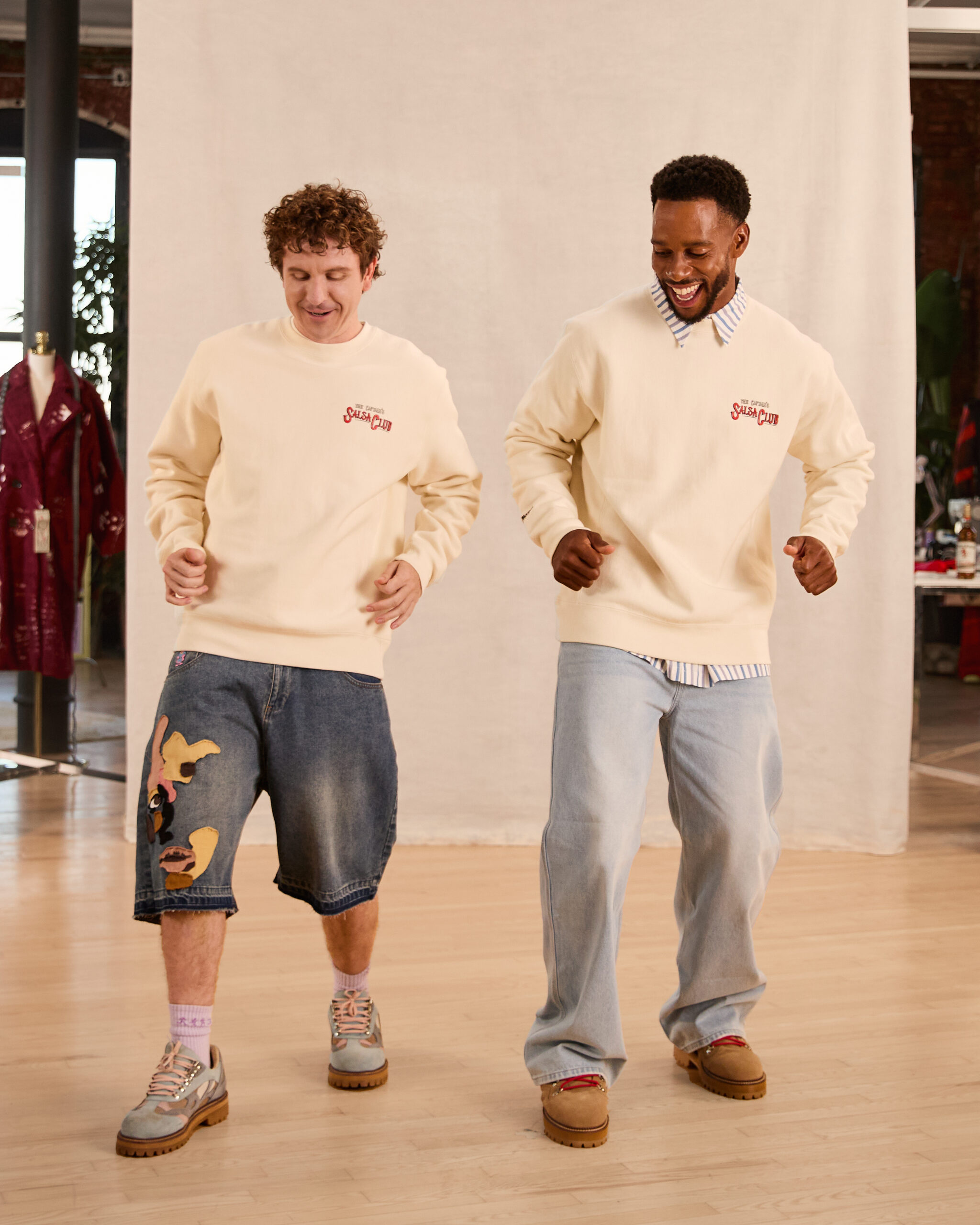
Courtesy of Captain Morgan

Tell me a little bit about why you wanted to join the Captain Morgan scavenger hunt. What about that project excited you?
I really like scavenger hunts. It’s funny, because with KidSuper, we’ve always thought about doing scavenger hunts, but we’ve never executed it on a high level, because it is not so easy. I was actually trying to build an app and try all these things, and we never, unfortunately, got around to it. It’s cool to partner with a brand to do it. I think that’s what makes a good partnership; when you guys do stuff that maybe you couldn’t do without each other. That’s how I often find and pick the partners that I work with. The scavenger hunt is a great example, because I’ve never done it with KidSuper but I always wanted to.
With talks of fashion becoming more and more digital focused, why do you think it’s so important to have these sorts of IRL activations, such as this one?
I’ve always been such a champion of IRL stuff. I got a physical store really early in the KidSuper career. I mean, I was living in the back of it, but it was a store. I thought that the store aspect of having a brand was so cool, because it’s like this physical place where people can live, and work, and interact, and meet each other, and collaborate. I love that it had that exponentially increased collaborative spirit. I think the physical stuff is really important, and especially when you’re creating, making things, and when you’re trying to meet people.
All the stores that I’ve had – not that many, I’ve had two – but they had recording studios or a gallery or an art studio, like places to work and meet people. With what we’re working on with Captain [Morgan], I think it just adds an actual, genuine, spirit to doing it. I think the nature of meeting people was actually more important to me than making a ton and ton of money.
Which elements of the Captain Morgan brand and the KidSuper brand align, and how did you mesh that and incorporate that into the merch line that you designed?
It’s funny, because we were just talking about this before your call, but, you know, I do sometimes have to collaborate with certain brands where you kind of stretch your personal identity to make it work. Captain Morgan’s identity is like this mischievous, adventure-driven, exploration brand, that’s a little cheeky. If you didn’t know me and someone was like, “Who’s Colm?” I think a couple of those would hit. I see myself as very kind of mischievous, and adventurous, and spontaneous.
Another huge thing about the Captain [Morgan] thing is going to unknown worlds. With me, with fashion, [it] felt very much like that. Especially because I was doing Paris Fashion Week, which actually was a trip to another country. I didn’t know how it was going to go. I didn’t know what was on the other side of the trip. It ended up being quite successful for me. So yeah, pretty similar brand identities in a funny way.
Speaking of Paris Fashion Week, how different is it for you to design for a fashion show? Do you call them fashion shows? It’s not your typical runway, if you know what I mean. For your KidSuper shows versus for a collaborative merch line like this one, is your creative process quite similar? Or is it very different?
Weirdly, it might be similar in that those fashion shows that I do are very driven by the fashion show concept. It’s story-first, because, as you said, they’ve become quite unique fashion shows. The main reason why it wasn’t – I mean, yes, there was a little bit of like, “I’m different. Look at me.” But there also was this idea of, “Okay, I’m going to Paris. I’m spending the most money I’ve ever spent in my life. I’m working the hardest and blah, blah, blah. I want to make sure that this is an impactful thing.” Not only for KidSuper but for me as a personal challenge, because it’s draining me on all fronts. I was like, “Man, if I’m going to do these [fashion shows], they have to be really good and really cool and do something that I’ve always wanted to do.”
When I’m doing these collaborations, it’s pretty similar in terms of like, “How can I take the collaboration and peel back some of the storytelling that’s really personal and inspiring to me?” For this one, obviously it was with Victor Cruz. I’m from New York, and so when he was playing and he was doing the salsa dancing, it was this huge thing, culturally. And so I was like, “Okay, maybe let’s tap into that.” I had personally thrown a couple parties where I hired salsa dancers, and so it weirdly was on brand to tell that story.
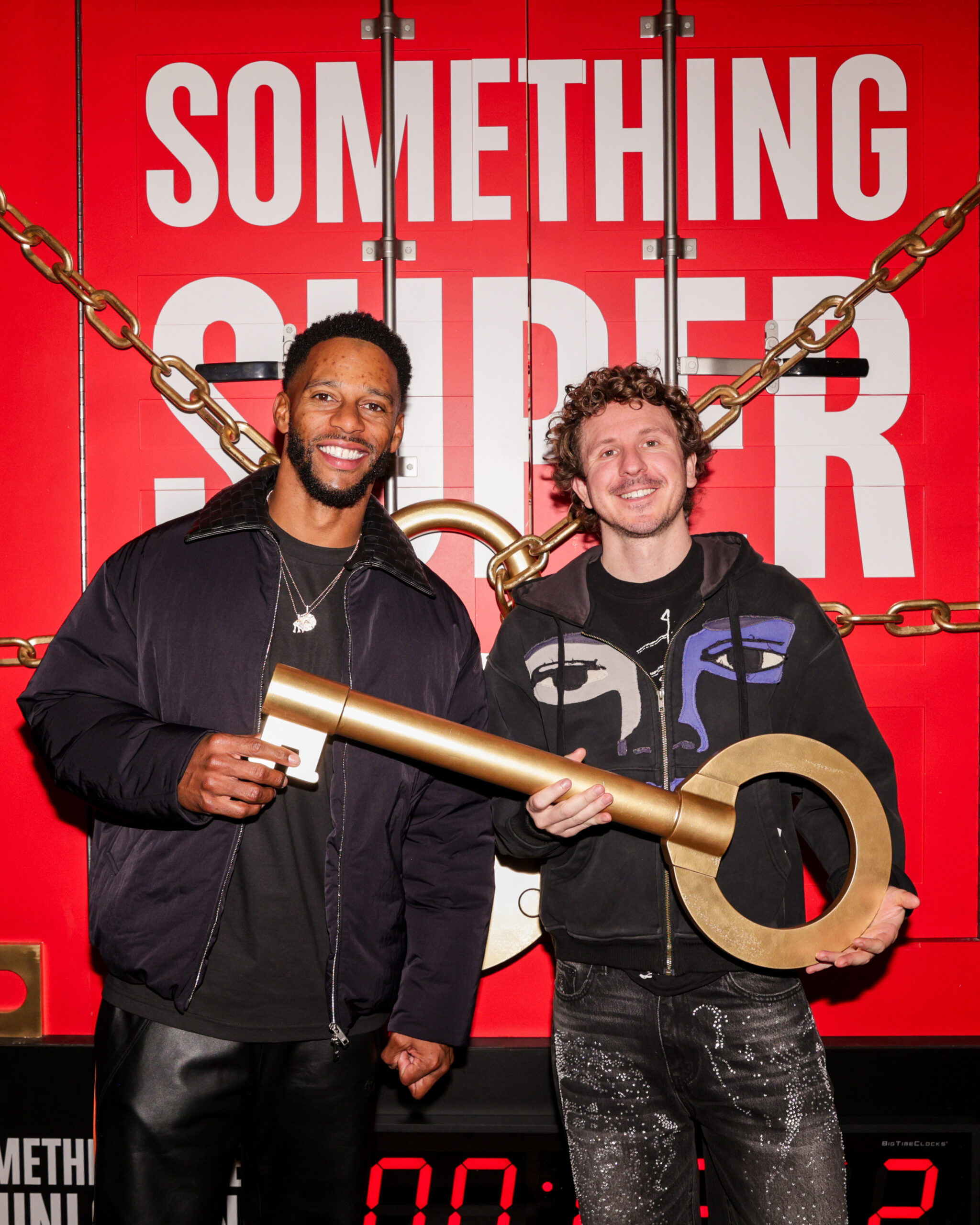
Courtesy of Captain Morgan

KidSuper has amassed this really niche community of people who are really into youth culture. How important do you see yourself as the designer in cultivating that visual identity for that community? Is that something that comes across in your mind at all during your design process?
I definitely don’t feel like I’m like, “Oh, I’m representing these people. I must design for them.” I have a problem when I’m designing. I always want to try something new. When you’re building a brand, part of it, and no one talks about that, is doing the same thing over and over and over again for 100 years. For example, all the big brands have a pattern that you all know, and they have a colour scheme that you all know. I often forget that. So then I find myself referencing myself where “I’m like, Okay, Colm, focus on KidSuper. You have to do this print, or you have to do a painting, or a face or whatever.” Even now I’m looking at the new collection, and it isn’t as KidSuper-y as it should be, so now I have to make it more KidSuper. So I do feel like I have to stay true a little bit to the brand, but also, I mean you evolve and the world evolves, so you kind of change with the people around you.
I do feel somewhat of a, you know, not pressure, but pressure to do awesome stuff. I can’t do something small. Well, I can, but I have to try really hard. It’s a really bad thing to get known for, trying hard [and] breaking expectations. I wish I was just known for really boring black clothing, and then I could just do that for the rest of my life.
Maybe, you wouldn’t be known, though.
Yeah, it’d be hard. I mean, I’m just joking with that comment.
If you could give young designers, or young kids thinking about going into design, a piece of advice, what would it be?
The best thing that I tell young people is just to try stuff. Because you feel when you’re young, you have to have everything, this perfect first collection, or this perfect item to define who you are. No one knows who you are anyways. You’re screaming to an empty crowd, so nobody’s there to watch you fail, and if you succeed, more and more people will know about you. I think the main thing for young people is to just do it. Just try. I mean, obviously we just Nike quoted it, but I think when you’re young, you have this freedom to play and fail and succeed. You through trial and error in fashion., or for me, I did.
You have this great time period when you’re young. The stakes are so low, so you can just attempt new things and try really hard. And also, there’s a lot of kids not trying, so you can stand out.
Did you ever have an “I made it moment?”
I have had moments that I thought as a kid that would be “Holy shit. I made it” moments. When I was a kid, I thought those “I made it moments” would feel more ground altering. But I’m saying I’ve had those moments that as a kid, if you told me, I would have been like, “No way.” I guess they just didn’t feel that crazy. And maybe that’s a depressing way to describe that, but I haven’t felt like my life has fully changed.
There have obviously been [some incredible moments] – playing with Ronaldinho, oh my God, that was my fucking life mission; the Louis Vuitton thing, absolutely insane; getting this building in Brooklyn, this 10,000 square foot building that I’m building all these dream rooms out of. If you told me that when I was a kid, I’d be like, “No way.” But I’m still very much the same person, and maybe that’s why it doesn’t feel [life-altering].
I guess that’s a humbling thing about fashion, too. It isn’t as glamorous a job as people think it is. You are working so, so hard because it is so demanding of constantly releasing things.
Fashion is very humbling in that sense. Like, “Oh, you just had a great collection. Well, you’ve got to do it again in six months.”
If you ever hear interviews of big fashion designers, they’re like, “Yeah, I drink coffee and smoke cigarettes and work 20 hours every day.” And you’re like, “All right, I thought you were living in a castle and playing with models.” And then it’s like, no.
I think people genuinely don’t realise how demanding fashion is because of that. A lot of art forms you can kind of take off like. Especially as you get more on top of your game. In fashion, it’s actually more demanding. Other art forms, it’s like, “I’m on top of my game. I’ll drop an album every five years, or I’ll do only the movies I want.” Fashion’s like, “Oh, you’re on top of your game? Here’s 17 more collections, and here’s 15 other collaborations.” So it’s hard. ‘m going to complain about fashion, though, that sounds horrible. I’m just saying it is an art form [forces] you [to] make decisions really quickly and not be so precious, which I think is actually, for my personality, [is] quite good. You get to play and try ideas that you’re maybe not 100% confident in with but it might be the answer that works out.
Does that mean no more big creative director roles at Big Parisian houses?
No, no, no. I would love that. That was actually way easier than KidSuper.
How come?
[At KidSuper] I’m doing everything myself. I’m the guy making the tech pack, who’s also designing, who’s also talking to factories, who’s also marketing, who’s also merchandising. At one of these big houses, I was just ideas. So it was like, “Okay, I can do that.” That’s like 1/30 of my job in KidSuper. So it was really fun. It was really, really fun and [it had a] huge support system. I had never dealt with stuff like that. I’m in for everything. I’m in for all adventures [winks], Captain Morgan.


